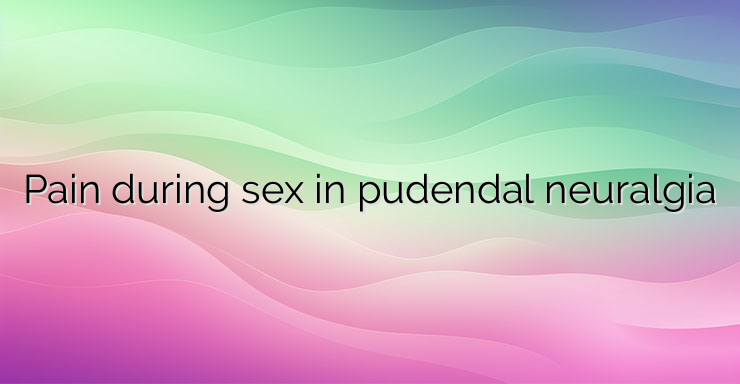Pudendal neuralgia is caused by compression and chronic (long-term) inflammation of the pudendal nerve. It often occurs as a moderately to severely debilitating neuropathic pain syndrome, as it can significantly impair both the ability to work during the day and the sleep of those affected. However, it is not uncommon for patients to have a single symptom – related to pain during sex or difficulty maintaining an erection in men. The pudendal nerve innervates the area between the genitals and the anus (perineum), the area around the anus and the lower part of the rectum, the external genitalia in women, and the scrotum and penis in men. It is made up of fibers with sensory, motor and autonomic function. Damage to the pudendal nerve causes more sensory deficits (pain, burning) than motor deficits. The pudendal nerve has a complex course through the anatomical structures of the pelvis, therefore the probability of its damage is very high. The main symptom is pain in the pelvis – in the initial stages, the pain is not characteristic of night time, but with prolonged and incorrect treatment it leads to insomnia. Numbness in the pelvis and genitals, burning, shooting pain, and unlocking pain may also be present, even when touching clothes and sheets, due to the increased pain threshold. Frequent urges to defecate and urinate due to sphincter dysfunction are not excluded. The pain, apart from after intercourse and during it, can also be present during defecation. In women with pudendal neuralgia, intercourse may be moderately painful. In addition, they may have difficulty reaching orgasm. Often there is vulvodynia – burning and pain in the area of ??the vulva. In men, sexual dysfunction manifests as pain during erection, difficulty maintaining an erection, or painful ejaculation. The pain worsens when sitting for a long time, and improves when standing or lying down – due to the mechanical release of the nerve from the neighboring structures that pressed it. Pudendal neuralgia often goes unrecognized and mistreated. Prolonged sitting, cycling, riding or even chronic constipation (usually for months or years) can significantly worsen the pain symptoms. Damage to the pudendal nerve during childbirth or gynecological interventions – abrasion, surgical termination of pregnancy, as well as surgical intervention in the area of ??the anus and rectum are also part of the etiology. In rare cases, a tumor process compressing the pudendal nerve can also cause symptoms. Pudendal neuralgia can be very difficult to diagnose because no specific test exists. The diagnosis of this condition depends largely on a proper history and physical examination. It shows altered skin sensitivity, and it is recommended to carry out a vaginal or rectal examination – with a finger, pressure is applied to the pudendal nerve to see if pain is provoked.Other methods are an MRI and a nerve block with an injection of pain medication around the pudendal nerve to see if the pain goes away. In women, the blockade can be performed transvaginally, and in men transperineal. A differential diagnosis of pudendal neuralgia is made with many conditions such as coccygodynia (pain in the tailbone), abacterial chronic prostatitis, idiopathic anal pain, interstitial cystitis, irritable bowel syndrome, pelvic floor dysfunction, and others. Recommendations are to use special donut pillows to reduce pressure on the pudendal nerve and pelvic floor. In addition, physical therapy procedures, pelvic floor muscle relaxation exercises, Bowen therapy can be performed every few months. Medical treatment consists of pain relievers and anti-inflammatory drugs. More invasive methods are pudendal nerve block, neuroablation, and surgical treatment to decompress the nerve. References: 1. Pudendal Nerve, Physiopedia; 2. Pudendal neuralgia, National Health Service; 3. Pudendal Neuralgia, Cleveland Clinic.


Leave a Reply